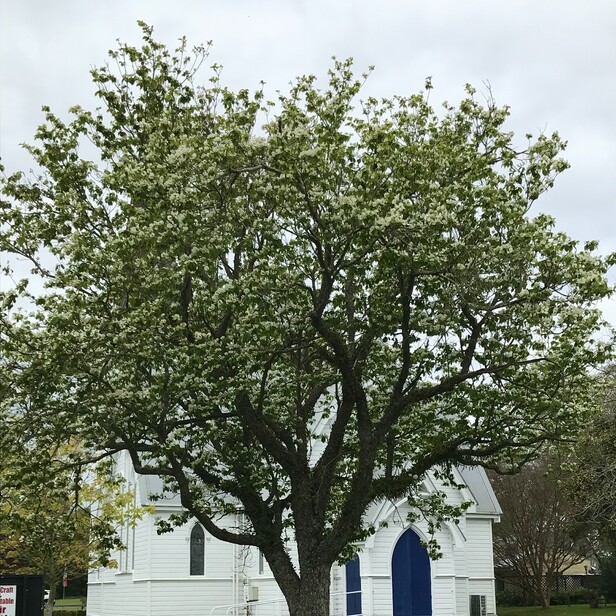Cornus kousa
aka Korean dogwood.
This attractive small tree stands in the grounds of St Andrews church. Blossoming in late spring when the tree is already in leaf, it is nevertheless beautifully showy when in bloom. However, what appears to be four white petals are actually four spreading bracts below a cluster of tiny, inconspicuous yellow-green flowers. In autumn the leaves turn a reddish colour, and the fruit is a pinkish-red compound berry about two or three centimetres across. Although the rind of the berry is bitter, the pulp is edible, with a flavour similar to a fully ripe persimmon. However, it contains several hard, inedible seeds which attach to the pulp and must be removed first. The berry has been used for making wine.
Korean dogwood, native to east Asia, is found not only in Korea, but also Japan and eastern China. It is not easy to distinguish from its American cousin, Cornus florida, but differs in a number of respects.
It will grow to eight or ten metres high, slightly smaller than C. florida. Also the tips of the flower bracts of C. kousa are pointed, while those of C. florida are rounded, and the former flowers usually a month later than the latter. Likewise, the fruit of C. kousa is a berry, that of C. florida consists of a cluster of two to ten red drupes about 10-15 cm long. The main advantage of the Korean dogwood is that it is more disease resistant than the American dogwood, and for this reason may be a better candidate for garden and street planting.
Visit Our Site
89 Thornton Road
Cambridge
Waipa
New Zealand
Donations
Kiwibank, 38-9005-0635102-01


